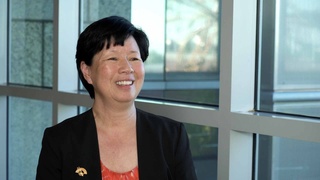Entrevistas
Returning to Hiroshima in ruins
Well I mentioned that the first traumatic moment was the bomb itself. The second traumatic moment was when we returned to Yokogawa. I mean you could not believe. The whole community, the whole city was gone. It was flat. That area is relatively flat area, so you could see across quite a number of blocks. Only thing that remained were non-combustible items, such as concrete, sheet metal, rocks. No vegetation. Only thing[s] that’s maybe organic that still laid around were charred gruesome bodies. There was quite an effort being taken, way before we returned, where people gathered the bodies and they cremated them as quickly as possible. So the stench of cremation, the burnt body, is something that you can't forget.
Even to this day. It was... what, maybe 10 years ago, we took a trip. We’ve been on many trips throughout the world, but we went to Nepal on that day. And then one of the features was to visit a Buddhist cremation ceremony. It was supposed to take place in some remote part of Nepal near a river. And I remember thinking, “Oh that might be kind of interesting.” But as we approached that area, the smell, just the smell made me nauseated. I told Irene, I said, “I don't know if I can go there.” But I was able to watch the ceremony and I lived through it okay. But every so often, certain things will trigger the memory then I either get nauseated or maybe get choked up a little bit.
Data: September 3, 2019
Localização Geográfica: California, US
Entrevistado: Masako Miki
País: Watase Media Arts Center, Japanese American National Museum







